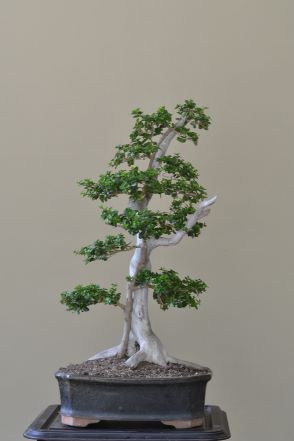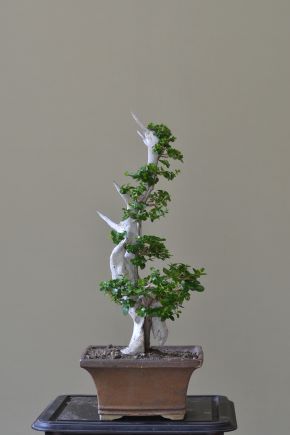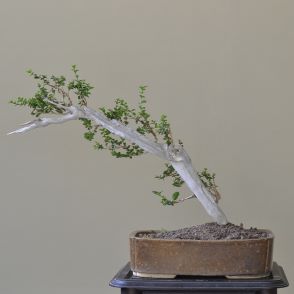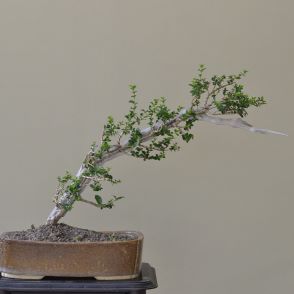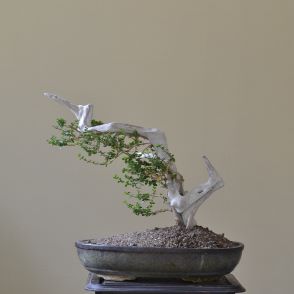Literati and Tanuki Bonsais
Literati (Bunjin)
Literati (Bunjin) bonsai style is an abstract expressionist form of bonsai creation that allows more freedom, spontaneity and personal expression to the bonsai artist. John Naka, the great bonsai master, said of Literati style, “It is a dream, an abstract. It is an extremely advanced, significant bonsai design.”
Bonsai master Quinquan Zhao defines four key characteristics of a Literati bonsai: (1) sparseness (2) plainness (3) aloofness, and (4) refined elegance. Literati style is characterized by an almost bare trunk with few branches, and foliage only towards the top of an often long, contorted trunk. Focus is mostly on the flow of trunk line and less on elements such as trunk taper, branching and foliage. Foliage is kept minimal, just enough to sustain the tree to be healthy.
In nature, Literati style get formed when a tree has struggled to grow among dense group of trees, and competition is so fierce that it can survive only by growing taller than other trees around it. The trunk grows crookedly upward and is completely bare of branches, as the sun hits only the tree top.
Since ancient times in China, the word Bunjin has been used to denote the “literati” (intellectuals), who created and passed down a culture based on knowledge and wisdom. Literati bonsai embodies what the literati envisioned with regard to life on this earth: sparseness, plainness, aloofness and elegance.
Bonsai is an art that originated in China, but got developed in Japan. Bonsai, like most Japanese art forms, derives its aesthetic norms from Zen Buddhism. Zen preaches simplicity of life and living in harmony with nature. The Zen aesthetic norm of simplicity and harmony is called Wabi-sabi, to which bonsai should conform. Wabi means “poverty”, and denotes a lifestyle wherein all but bare essentials are given up, yet opulent in thinking and aspirations. Sabi means “solitude”, and symbolises freedom from the shackles of the society and detachment from the dreariness of day-to-day life.
We can notice the confluence of principles pursued by the Chinese literati and the Japanese Zen masters. The core of what the literati taught – sparseness, plainness, aloofness and elegance – and that of Wabi-sabi – poverty and solitude – essentially are the same. So perhaps Literati bonsai is the true bonsai style that represents what the literati perceived, as well as the one, among other bonsai styles, that conforms to all aesthetic principles of Wabi-sabi.
I started developing Literati bonsais about three years back. Initially, I converted the styles of some existing plants to Literati; then grew new saplings and shaped them to Literati style. The trunks shapes have been developed for most plants. Now the branch structure and foliage need to be developed for all except a few.
In the first look, it may appear that the trunks are too contorted/ crooked. Photos of most Literati style bonsais on the Internet show such, or even more crooked trunks. I assume that it is the accepted style and have tried to emulate them.

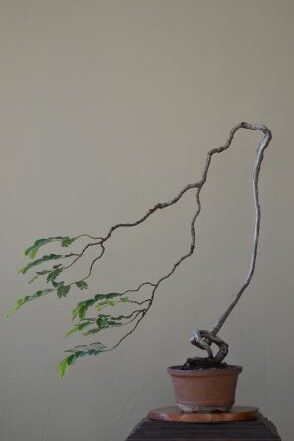
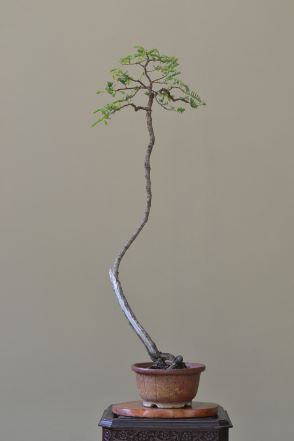
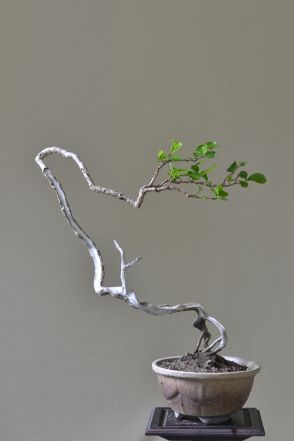
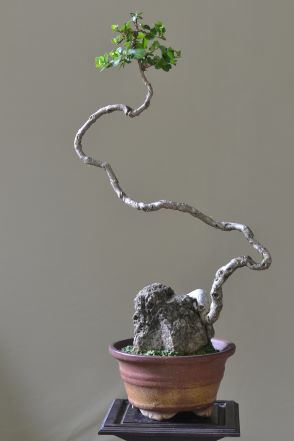
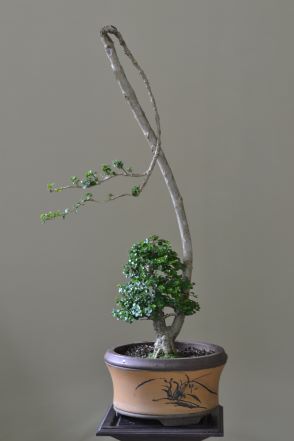
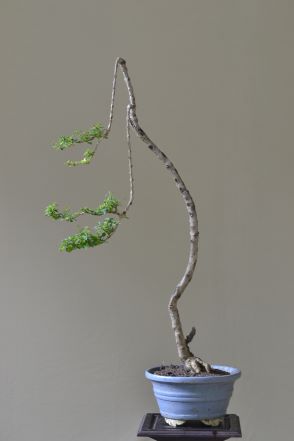
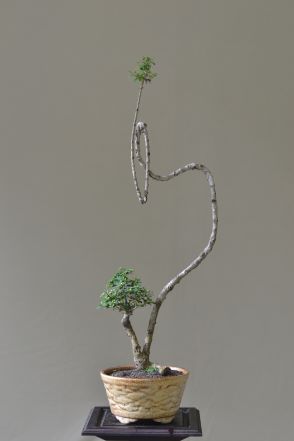
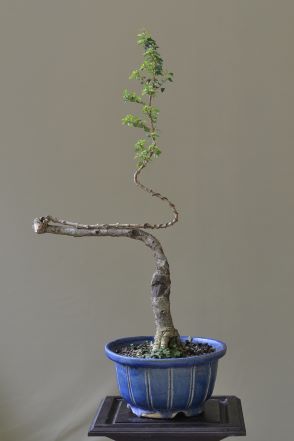
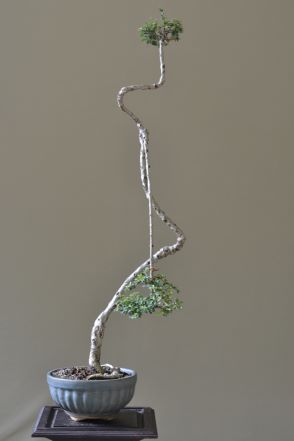

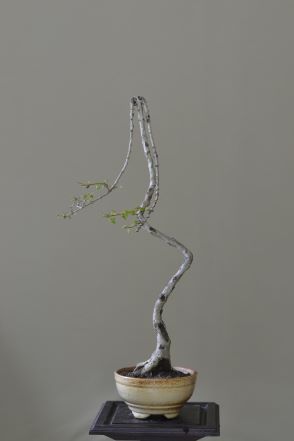

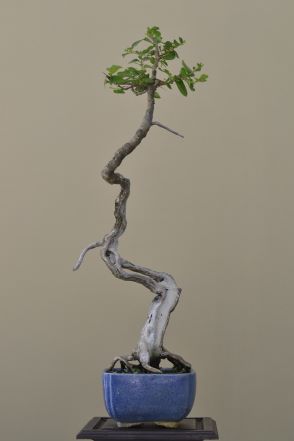
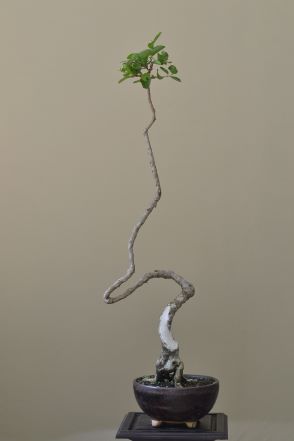
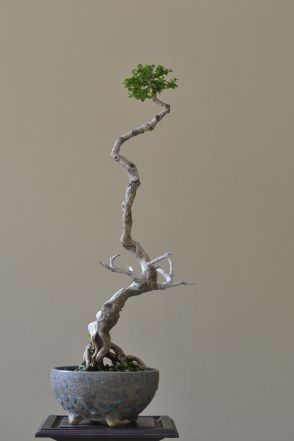
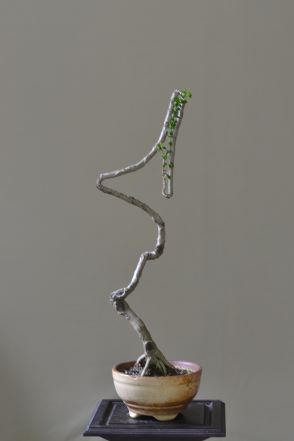
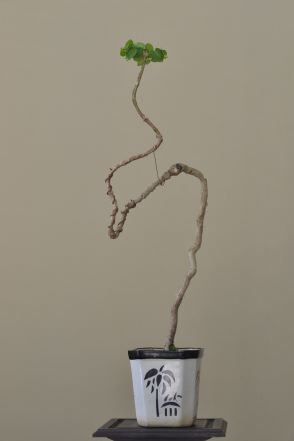
Tanuki
Tanuki is not exactly a bonsai style, but a unique technique for making aged-looking bonsais with young plants. Tanuki is in fact an extension of the deadwood techniques, such as jin and shari, commonly employed in bonsai crafting to give older look to the plants than what their real ages are. For making a Tanuki bonsai, a young live plant is anchored with a piece of deadwood, in order to create an illusion of aged look. Tanuki can conform to any of the traditional bonsai styles.
A young thin supple plant that can withstand harsh bending, and an attractive piece of deadwood are chosen for making the Tanuki bonsai. A groove is carved into the deadwood, preferably using electric hand tools, and the plant is embedded within the groove with nails or screws. The plant is then potted in a pot and grown like any other bonsai plant. The trunk grows in the deadwood groove and the plant develops good branching and foliage. The plant is trained to the desired bonsai style employing the standard bonsai shaping techniques. With the passage of time, the plant and deadwood together would look like one composite entity, and the Tanuki would take the appearance of an aged tree. In the hands of a skilled bonsai artist, the finished creation can be spectacular.
Tanuki bonsais are so named after ‘tanuki’, which in Japanese folklore is a ‘racoon dog’, shape-changing trickster, and so Tanuki technique is not an accepted part of the Japanese bonsai tradition. Tanuki bonsai is known as “Phoenix Graft” in the West, after the mythological Phoenix bird that flew out of its own ashes, meaning that a deadwood piece has attained a new life in Tanuki. Japanese make Tanuki bonsais, but Tanuki bonsais are not displayed at formal Japanese bonsai shows.
All plants below are Premna microphylla. The back views of the plants are also given to show the growing plants. The age is three years. All plants are still under development.

